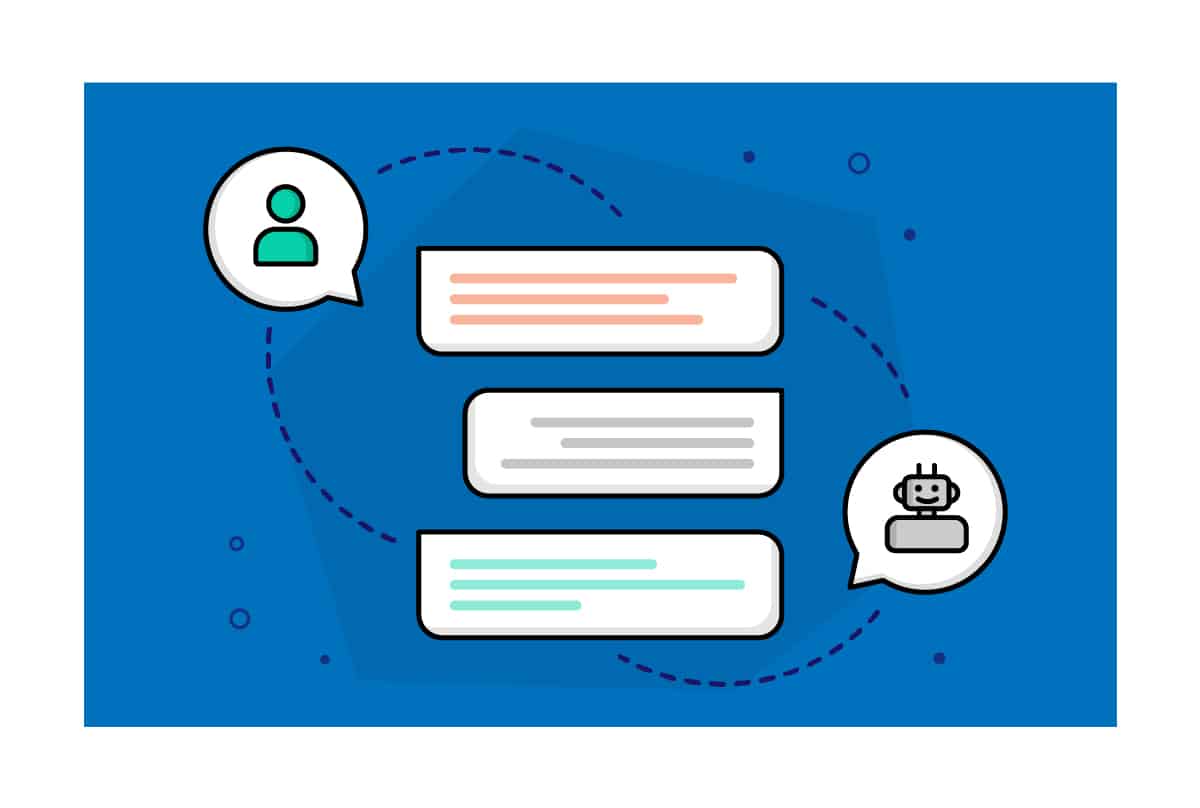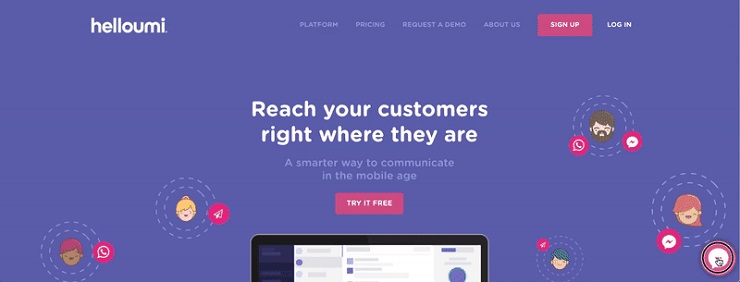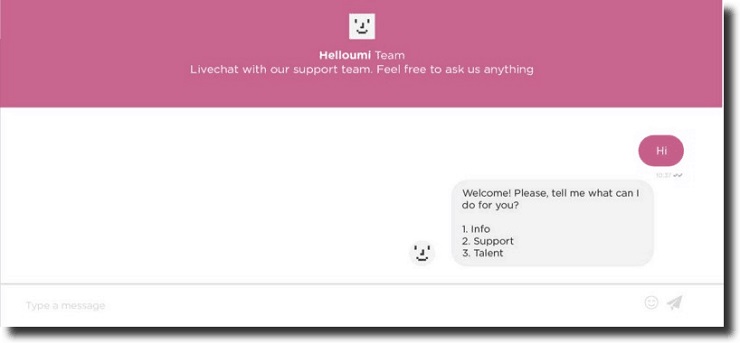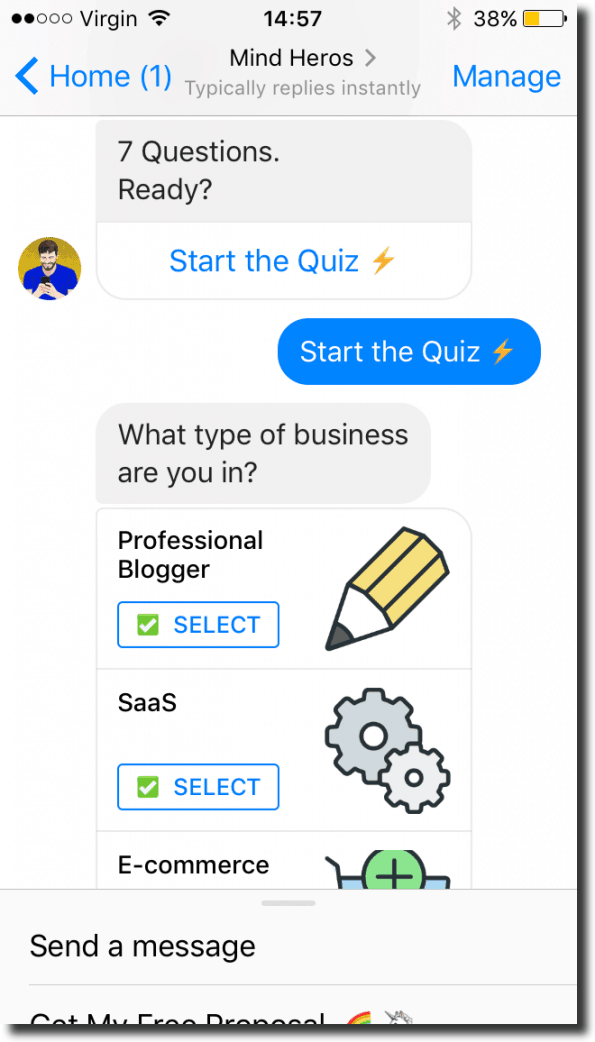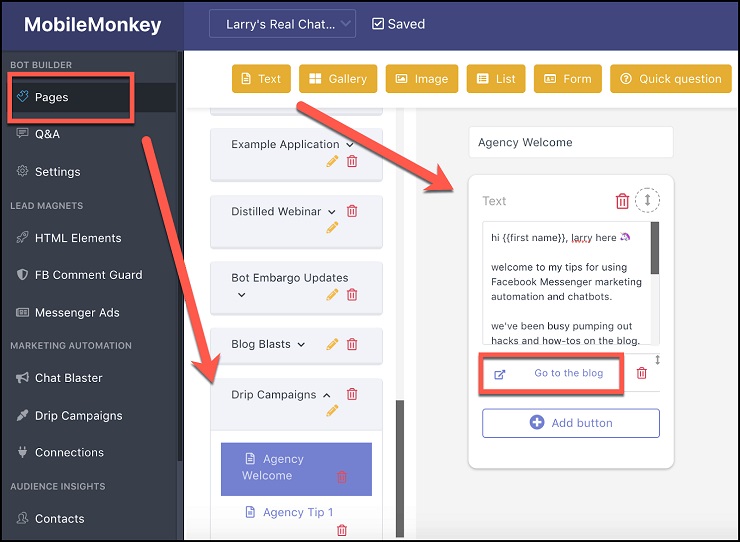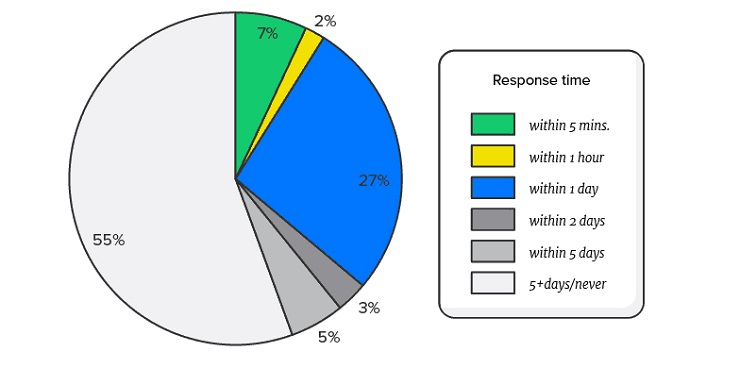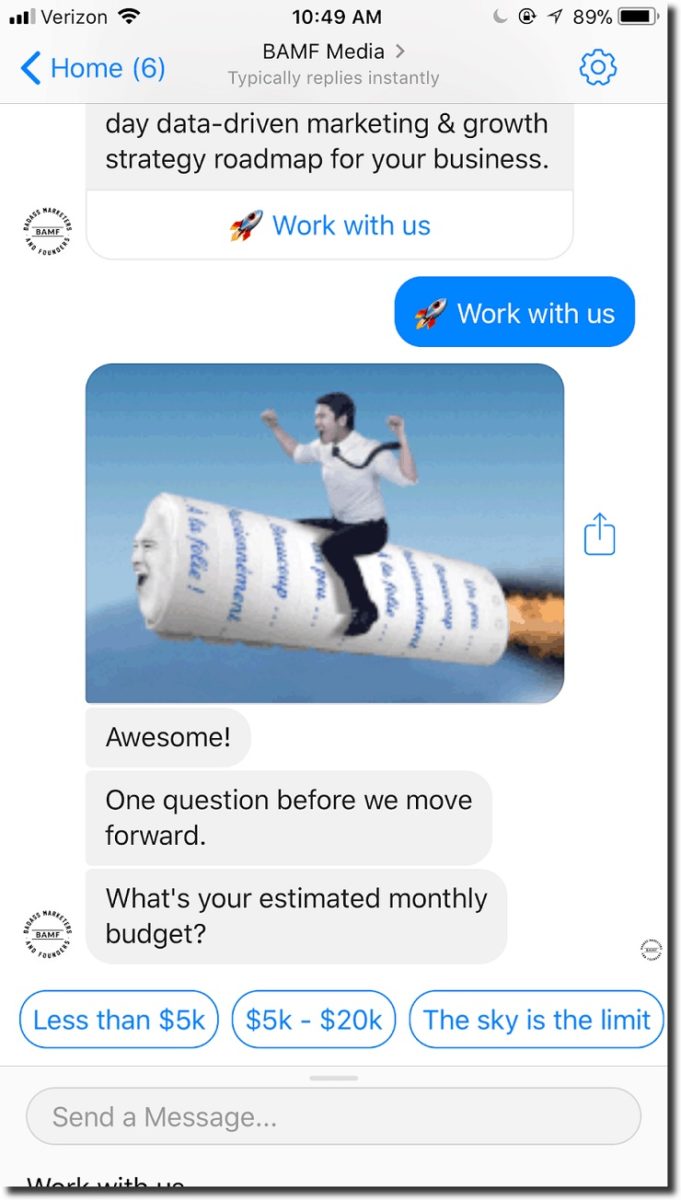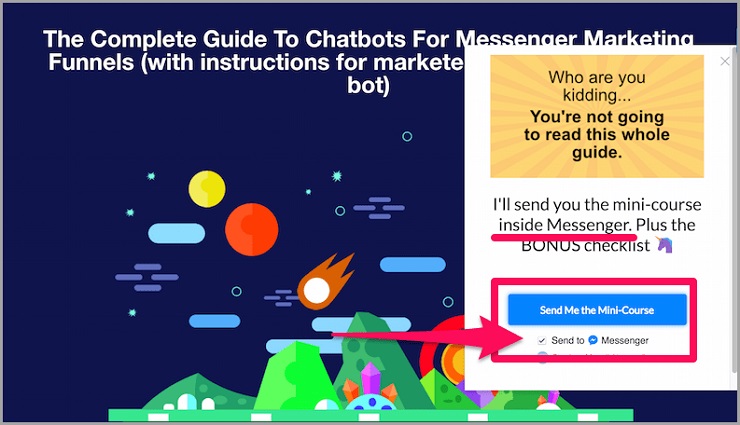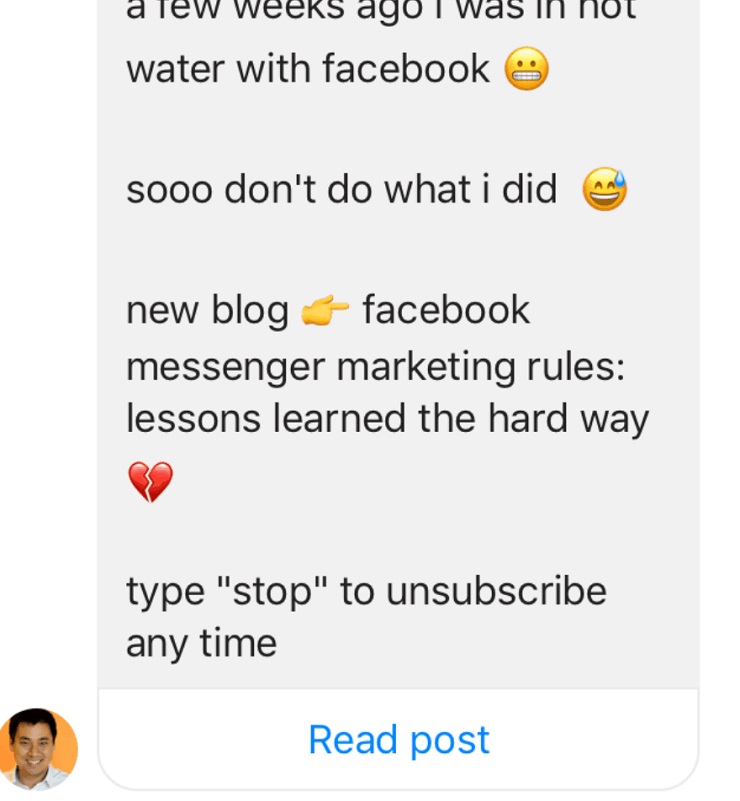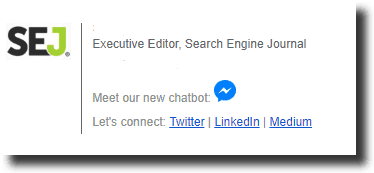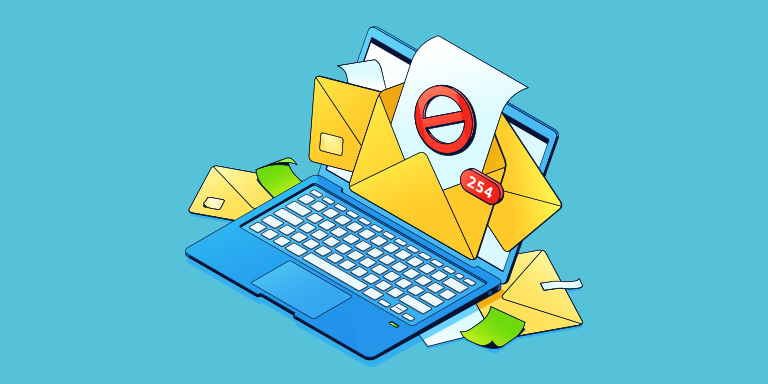Chatbots have taken the marketing world by storm. And it’s easy to see why. With instant gratification becoming the norm and not the exception, replacing lead forms with immediate conversations leads to more engagement.
A chatbot is an automated piece of messaging software powered by AI. They are programmed to build a conversation flow which aims to match on-screen text with user intent. In most cases, chatbots are programmed to understand questions, provide answers, and guide users along a predetermined path.
But what can chatbots really do, other than direct people to FAQ sections or answer basic questions? Lots. Everything from reducing staffing to automating lead generation to segmenting drip campaigns way better than your email software does.
You can either build your own chatbot or a Facebook Messenger Bot. With over 70 million daily and 1.3 billion monthly active users, Facebook Messenger is one of the best places to reach customers online. But chatbots in any venue offer an exciting and powerful new way to engage with potential and existing customers.
One SaaS company used chatbots to generate 15% more leads and a faster sales cycle when compared to landing page sign-up forms. And they did so with 50% of their conversations run entirely by bots.
You’ll have to see it to believe it.
Here are four ways you can use chatbots and Facebook Messenger Bots to increase your SaaS conversion rates.
1. Ditch the Cookie-Cutter SaaS Landing Page
Picture this: Your potential clients are looking for new marketing tools. They’re searching Google and browsing blog posts on their pain points and some new tactics they might test out. They come across your blog and find some amazing content and a compelling lead magnet. A webinar, an online course, an ebook, a podcast download, could be anything.
They click on the offer and get redirected to yet another SaaS landing page:
Look familiar?
Your lead magnet is impressive, but it’s blocked (gated) by an annoying form that nobody wants to fill out.
Data from State of Lead Generation 2018 shows that forms are slowly becoming less useful. Ditching long, burdensome forms and using more helpful visuals can lead to 180% more engagement.
That’s because, the truth is, unless you have built huge brand awareness, nobody wants your content that badly. It’s why conversion rates typically hover at just a few percent.
Typical cookie cutter landing pages were great maybe five years ago when quality content was scarcer and more valuable. But now that millions of pieces of content get published daily, we all have the ability to click back to Google to find similar content in mere seconds. This means your content has to be top-notch if you want conversions. Good isn’t good enough anymore. (Check out this case study showing how bad content nets bad results.)
And that’s a huge problem when leads, typically generated from content marketing, are the lifeblood of most SaaS business growth. You need contacts, emails, and interested users to eventually convert into paying customers.
Sub-par conversion rates on typical landing pages are why Fran Conejos of Landbot decided to remake his cookie-cutter SaaS landing pages into a messenger bot that was conversational in nature.
His standard landing page was only converting at 3% on a good day. It looks just like tons of SaaS landing pages out there. At first glance, it’s awesome:
It has a great design, sleek and smooth performance, and a great value proposition headline. There is nothing conventionally wrong with this landing page, yet it’s only generating a 3% conversion rate. Why? Because playing it safe with a standard sign up page is what most people do.
Then one day, his team realized that when adding a live chatbot to the landing page, they had a huge glitch that was basically replacing the entire landing page with one big chatbot:
The chatbot was going full screen and preventing any users from clicking out until they engaged with the bot. Whoops, surely that must have completely screwed up their conversions, right?
So Fran checked his analytics data later that day when he noticed the error, discovering that his landing page “had reached a 9.6% visitor-to-trial conversion rate. That was 3X to 4X our usual live chat conversion.”
He goes on to say that “every time we tried to replace our bot with a more traditional website, the bounce rate goes up, the visitor time on the page goes down, and our leads/visitors ratio suffers.”
There’s one big takeaway we can learn from this mix up—there’s huge potential in conversational marketing.
A glaring mistake that forced users to engage with a chatbot as the landing page, instead of the standard form, was able to convert 3-4 times better.
The reason is that users were able to talk through their own problems, questions, and pain points, rather than reading a landing page that barely scratched the surface of their individualized needs. It effectively shifted the focus from the product to the user.
Landing pages fail at catering to the individual, assuming common traits and characteristics to appeal to a broader audience.
With chatbots, that’s not an issue.
Looking to increase free trial conversions with chatbots? Think outside the box and use them as more than just a platform to answer customer inquiries. Treat your Messenger bots as a more personal way to engage customers and move them along the funnel, even as a complete replacement for your landing page or sign-up form. Read on to find out how you can do this.
ATTENTION: Learn how to make your landing pages convert like crazy! It’s all in our Landing Page Formula course. Click below to get more info on the course and sign up for the Free VIP waitlist to be notified when we open for enrollment.
Learn How to Make Your Landing Pages Convert Like Crazy! Join Our FREE VIP Waitlist Now.
2. Use Chatbots to Segment Like an Account-Based Marketing Campaign
Speaking of treating each customer as their own personalized market, let’s explore how you can segment customers, using bots to manage each lead like you would in an account-based marketing campaign.
Everyone wants to land more clients to take their revenue from barely profiting to explosive growth.
But when push comes to shove, very few people want to put in the time and effort that it takes. Most want to run broad campaigns where they target “sales teams” or “men ages 20-45.” It may seem counterintuitive, but that’s not specific enough to really get the clients you need.
Thankfully, there’s a solution to this conundrum: account-based marketing (ABM). And it’s perfect for Messenger bots.
Account-based marketing is opposite of the approach most B2B marketers take. It strays from the typical inbound marketing methodology, where you rank content and appeal to a wide audience, only to convert a few percent.
Instead, ABM focuses on segmenting specific target accounts that you want to acquire and personalizing messages just for them.
Think about a dream client for your SaaS business. Maybe it’s even a giant client like HubSpot or Microsoft. The goal with an ABM approach is to use Messenger bots to prequalify and hyper-personalize their experience so it seems like you’re marketing just to them.
How? By running campaigns directed at them with more specificity than you could in a general blog post or lead magnet. Does it work? You bet. According to Alterra, 97% of businesses using this strategy state it had the highest ROI out of any tactic they’ve tried.
Instead of running campaigns that target broad audiences, increase SaaS conversion rates using Messenger bots with an ABM approach. How does this work? It’s slightly different than your typical ABM, but it focuses on the same essential components: Prequalification and hypersegmentation.
Using Messenger bots, you can prequalify users that land on your site with informational questions.
This is the exact strategy that Stephen Mayall uses:
Using a quiz-building format takes the pressure of a standard sales form off the table. It makes the lead generation process feel fun and lighthearted rather than an information grab.
To implement something like this, try a tool like MobileMonkey or another chatbot builder, which will allow you to quickly spin up segmentation campaigns to treat your chat lists like a single account:
Prequalification questions allow you to approve or disapprove of the people who make up your traffic before they become leads—before you spend countless hours and dollars vying for their attention and business, only to find out that they weren’t a fit later down the line.
Instead, you virtually sift through your traffic to reveal only the best of the best.
Does your business sell best to bloggers? Social media mavens? Shopping-based ecommerce businesses?
If you sell to more specific markets or find that selling to specific niches is more profitable, using Messenger bots can save you significant time and money.
Skip the remarketing, drip campaigns, cold email outreach, and phone calls. Get right to the point and turn interested traffic into leads while kicking traffic that won’t convert to the curb.
Be sure to segment your lists by interests, how they have responded to marketing content, and of course your key demographics. Then, continue to refine your lists to provide accurate and more personalized content to them in the future.
3. Let Your Messenger Bot Become Your New Funnel
Funnels are critical for pushing people from casual blog viewers to actual clients.
But you knew that already.
Typical steps marketers take to establish a funnel usually involve a standard practice of blogging, lead magnets, drip emails, and phone calls to drive the sale home.
But those measures aren’t all that effective. They take tons of manual work and effort, skyrocketing your overhead expenses. And according to the latest studies, conversion rates for SaaS companies suck:
At each stage of the funnel, you lose more and more potential clients. While that’s natural in any business, it shouldn’t be the norm. It’s certainly not for my clients.
You can’t afford to spend time and money on each funnel stage if you’re losing the majority of your leads as they move from top to bottom. Plus, the majority of businesses simply don’t have time to respond as fast as bots can.
The more time you wait to contact leads or engage with them, the bigger chance you have of losing them for good:
One strategy that has worked great for our clients is using Messenger bots that allow you to automate your entire funnel process and follow up with leads instantly.
Here’s how it works: When a user sends your business a Facebook message, they become subscribed to your Messenger bot and the conversation flow begins. This starts with top-of-the-funnel questions and offers media like webinars, downloads, or whitepapers. If your lead is readily interested in these offers, your bot’s questions then move to the bottom of the funnel with the goal of getting their contact information to forward to your sales team.
Similarly, chatbot professional Arri Bagah recommends using bots to assist your lead generation funnel strategy. Using a similar prequalifying strategy as I explained earlier, Arri states:
Not everyone that subscribes to your bot is a qualified lead, but you can use the chatbot to ask questions and see if they are the right fit for your business. If they are a fit, you can send them a link to your webinar or product page.
After being engaged by the chatbot for sales multiple times and reading user engagement signals, the bot automatically seeks to qualify the lead:
These BOFU (bottom of funnel) leads are automatically followed up with, and Arri can jump into the conversation to provide a human element if leads aren’t responding.
At each stage of the funnel, the bot messages potential clients with offers to webinars, lead magnets, and free educational content on their blog. If clicks are generated, users get pushed further down the funnel for more engagement.
Genius, huh?
If users fall out of touch on messenger, you can actually retarget them because they’ve engaged with you. All you have to do is create a custom audience via engagement.
You can quickly replicate this strategy by using your own email drip campaign content and repurposing it, too!
First, list out key qualifying questions that you ask leads. These will serve as your qualifying questions for a chatbot.
For example, questions like: What is your budget? What are your goals?
If you already have qualification questions listed for sales calls, reuse them!
Next, gather your drip content. Just like running an email campaign to segmented lists, you can replicate that content and deliver it in chatbot form!
There is no need to create new content. Simply reuse content from successful email drip campaigns to get off the ground.
Lastly, prepare and segment new content. In this step, you will want to prepare and segment content based on how users respond to your drip campaigns.
For instance, if a user says they are not interested in the drip content you offered, be prepared to follow up with different, more relevant content. If users do engage with your drip campaigns, be prepared to give them more, similar content to consume.
4. Use Chatbots to Build Your Email and SMS Contact Lists
Email (and SMS) contact lists are the lifeblood of business growth. Without contact information, traffic to your website and product pages is just that: meaningless traffic.
Getting traffic to your site is hard enough already, let alone converting those people into leads and getting their contact info.
Every single website you land these days is filled with CTAs asking for your email in exchange for newsletter content. It’s becoming a whole new form of banner blindness that sends potential leads right back to where they came from.
Email CTAs are subconsciously ignored just like banner ads were, because of overuse.
Even if you can get users to give you their email addresses, you better hope they can find your messages within inboxes crammed full of promotional junk:
That’s if your email even reaches their inbox (see: graymail).
So why not try using bots to do the trick? Creating fun and engaging ways to deliver content that users can opt into with the click of a button instead of typing an email?
Jeff Bullas recommends this strategy of using Messenger bots as a CTA, instead of email opt-ins, to build your lists:
Once a user opts in to your Messenger bot as a contact, instead of using the email CTA, your bot can automatically deliver any type of content you program it to:
As a huge added benefit, you can continually re-engage users with your Messenger bot based on their actions or responses to keep them nurtured without ever lifting a finger.
Similarly, you can place a link to your chatbots anywhere you want to start generating visitors.
For example, try placing a link to your chatbot directly on email or social media to scale website and bot traffic fast:
With SMS, you can follow the exact same strategy, collecting information from chatbot leads and directing those users into texting drip campaigns.
This is a strategy that ecommerce brand Air Tailor used, creating 100% year over year growth with it!
Starting with a chatbot, they collect user information:
Then, they direct those users into SMS campaigns for further segmentation and engagement.
Depending on your goals, you can include links to direct chat users back to your site or even deliver the content via PDF format directly into Messenger’s interface for a better user experience.
If you are struggling with producing leads via email CTAs or building your newsletter, it’s time to get creative and use Messenger bots to make the process fun for the user while taking the workload off your desk.
ATTENTION: Learn how to make your landing pages convert like crazy! It’s all in our Landing Page Formula course. Click below to get more info on the course and sign up for the Free VIP waitlist to be notified when we open for enrollment.
Learn How to Make Your Landing Pages Convert Like Crazy! Join Our FREE VIP Waitlist Now.
Use Messenger Bots to Increase SaaS Conversions
Messenger is without a doubt one of the best ways to engage potential clients online. It’s individually responsive and conversational, a format that users love. But being on the platform all day isn’t really an option. It’s too time-consuming.
Thankfully, messaging bots exist that can take over the grunt work, allowing you to do everything from pre-qualify leads to build an email list automatically.
Increasing your SaaS conversions with Messenger bots is easier than ever.
- Start by ditching your cookie-cutter landing pages. Ditch the forms and use chatbots to increase SaaS conversion rates in your lead generation and sales.
- Segment your traffic using an ABM approach to land big-ticket clients.
- Turn your messenger bot into a funnel machine that engages users at each stage.
- Or use it to build a contact and email list that you can leverage.
Messenger bots are powerful tools that are only beginning to shake up online marketing. Now is the time to use them to increase SaaS conversion rates and grow your business.
Have you started using Messenger and chatbots in your marketing strategy? Have any questions or concerns about using them? Hit me up in the comments!
